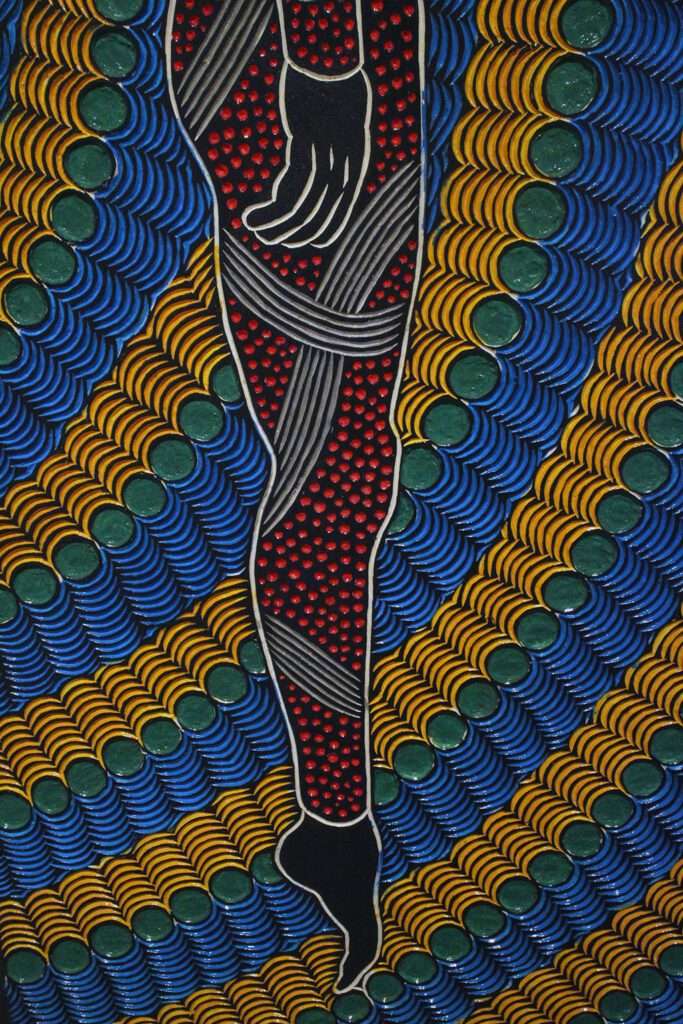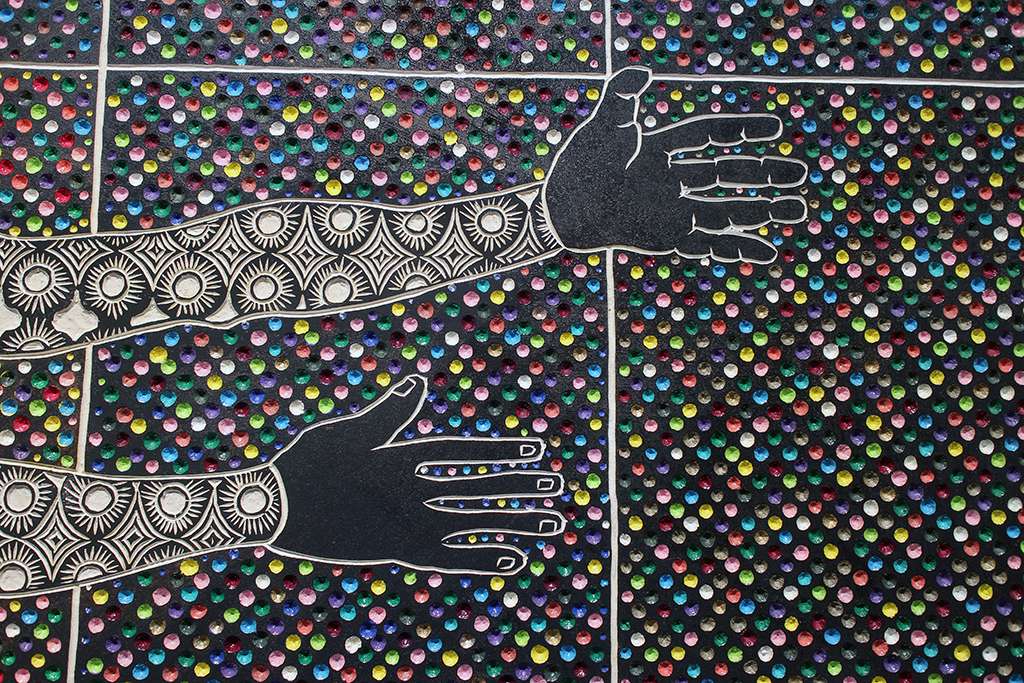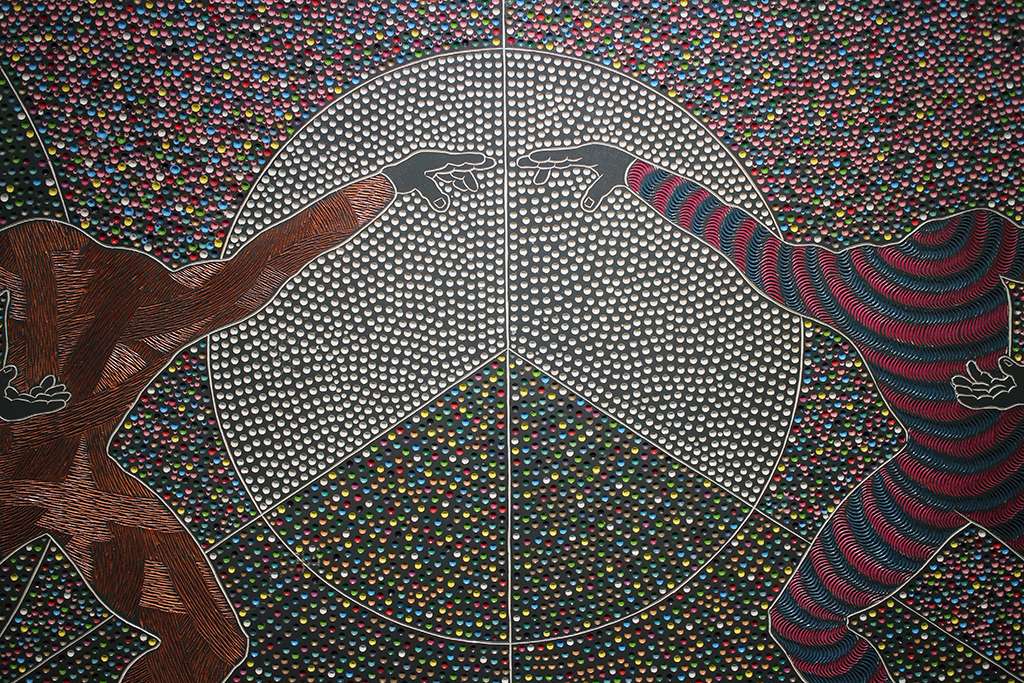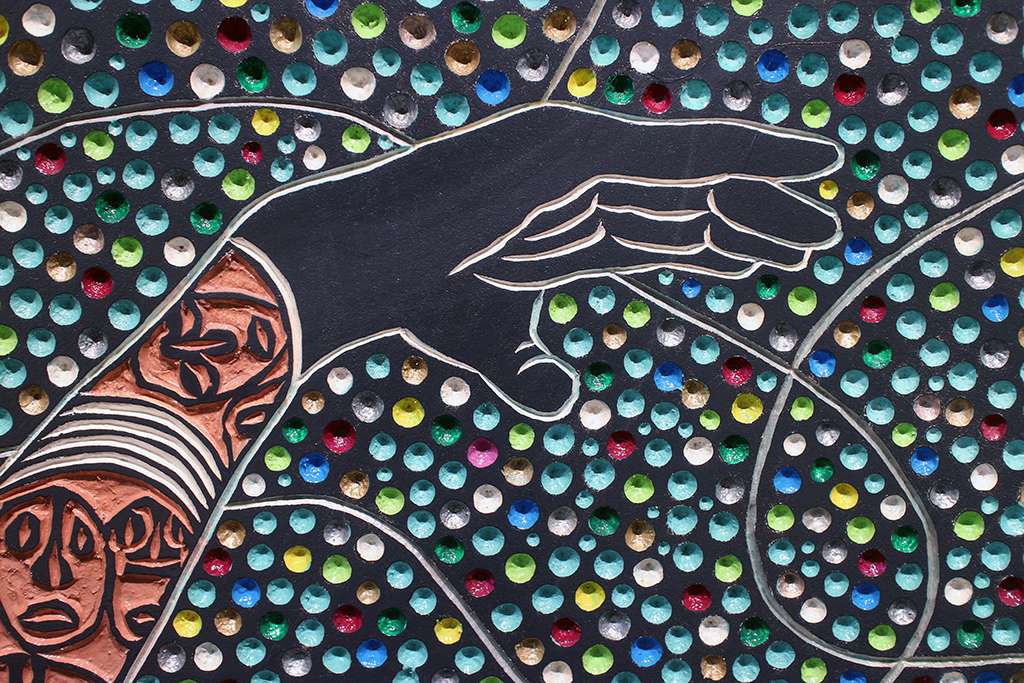



This body of work explores the notion of hidden talent and potential, understanding that, from the moment we are born, each of us has a specific purpose or destiny to fulfil. Luthuli’s artworks engage with the complex process of self-development, charting how, as we grow, we find ourselves along the way.
For Luthuli, his “birth secret” revealed itself to be his ability to create intricately handcrafted artworks. He began to use wood to distinguish himself from other artists. However, the wood process is particularly challenging as each work is meticulously hand carved and then painted, requiring patience and determination. The sweeping scale of many of these pieces reflects the perseverance of Luthuli’s process, which never limits itself creatively.
Luthuli begins with MDF wood board, typically sketching first to position his figures and patterns. He then uses a marker to embolden his lines before beginning the painstaking carving process; it can take two to three weeks to carve out a single piece. Once this step is complete, the artist applies paint to each individual part before varnishing to ensure the work’s durability.
Luthuli’s choice of the wood material provides a connection to the past; his ancestors’ livelihoods had often centred on handcrafting. In this sense, the artist’s latest body of work is a continuation of a far-reaching creative journey that extends back to his forebears.
Similarly, Luthuli’s exhibition sheds light on the patterns and practices of traditional Zulu dress and design, which are made up of vibrant and intricately woven beads. Growing up surrounded by this particular culture encouraged the artist’s fascination with colour and also with circular forms, inspired by the beading used in Zulu women’s clothing. The circle holds a particular significance in African culture, often symbolising oneness and, equally, the unfailing continuity of life.